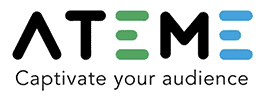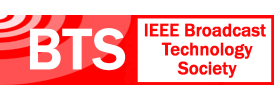- About
- Members
- Sponsors
- Subcommittees
- Technical Documents
- News
- Events
- Spotlight ATSC 3.0
- Contact Us
- Member Login
- Member Meetings
- Advanced Search
Search Site
Member Links
- About
- Members
- Sponsors
- Subcommittees
- Technical Documents
- News
- Events
- Spotlight ATSC 3.0
- Contact Us
- Member Login
- Member Meetings
- Advanced Search
A/71, ATSC Parameterized Services Standard
Posted on March 31, 2015 in
This supplementary standard defines a general purpose method to enable announcement of the technical attributes of program elements that must be supported in a receiving device to render programming on a particular virtual channel. It is not a replacement for fully-defined and optimized combinations of program elements defined for a particular service type, such as […]
A/70 Parts 1 and 2, Conditional Access System for Terrestrial Broadcast
Posted on March 31, 2015 in
A/70 Part 1 defines the Conditional Access System for ATSC Terrestrial Broadcasting. The necessary building blocks are called out that will enable broadcasters to fully exploit the capabilities of digital broadcasting using ATSC. This standard is based, whenever possible, on existing open standards. Download A/70 Part 1:2010, “Conditional Access System for Terrestrial Broadcast”, approved 30 […]
A/65, Program and System Information Protocol for Terrestrial Broadcast and Cable
Posted on March 31, 2015 in
This document defines a standard for System Information (SI) and Program Guide (PG) data compatible with digital multiplex bit streams constructed in accordance with ISO/IEC 13818-1 (MPEG-2 Systems). The document defines the standard protocol for transmission of the relevant data tables contained within packets carried in the transport stream multiplex. The protocol defined herein is […]
A/63, Standard For Coding 25/50 Hz Video
Posted on March 31, 2015 in
This document describes the characteristics for the video subsystem of a digital television system operating at 25 Hz and 50 Hz frame rates. Download A/63:1997, “Standard For Coding 25/50 Hz Video”, approved 2 May 1997.
A/57B, Content Identification and Labeling for ATSC Transport
Posted on March 31, 2015 in
This document defines means to uniquely identify content (an audiovisual work). It specifies the use of an externally defined identifier, such as ISAN, and it defines an alternative house numbering system. This document also defines the semantics of the use of the MPEG-2 content labeling descriptor for labeling audiovisual content with these identifiers in the […]
A/53 Parts 1 – 6, ATSC Digital Television Standard
Posted on March 31, 2015 in
The Digital Television Standard describes the system characteristics of the advanced television (ATV) system. The normative Parts of A/53 provide detailed specification of the parameters of the system, including the video encoder input scanning formats and preprocessing and compression parameters of the video encoder, the audio encoder input signal format and pre-processing and compression parameters […]
A/52, Digital Audio Compression (AC-3) (E-AC-3) Standard
Posted on March 31, 2015 in
This document specifies the coded representation of audio information and the decoding process, as well as information on the encoding process. The coded representation specified is suitable for use in digital audio transmission and storage applications, and may convey from 1 to 5 full-bandwidth audio channels, along with a low-frequency enhancement channel. A wide range […]
A/49, Ghost Canceling Reference Signal for NTSC
Posted on March 30, 2015 in
This document describes a ghost canceling reference (GCR) signal for NTSC television signals. Download A/49:1993, “Ghost Canceling Reference Signal for NTSC”, approved 13 May 1993. Reaffirmed by ATSC 10 December 2014.
News Categories
News Archives
Subscribe
Subscribe to The Standard, our monthly newsletter. Learn More
Join ATSC
ATSC is a membership organization with both voting and observer categories. Voting members include corporations, nonprofit organizations, and government entities, and they participate actively in the work of ATSC. Observers are individuals or entities not eligible to be a voting member.
Subscribe to our Newsletter
Subscribe to The Standard, our monthly newsletter, to stay up-to-date with ATSC news and events around the world.
Site Links
Contact Us
ATSC
1300 I Street NW, Suite 400E
Washington, DC 20005 USA
Do you have questions about ATSC?
About ATSC
ATSC, the Broadcast Standards Association, is an international, non-profit organization developing voluntary standards and recommended practices for digital terrestrial broadcasting. Serving as an essential force in the broadcasting industry, ATSC guides the seamless integration of broadcast and telecom standards to drive the industry forward. Currently, the ATSC 3.0 Standard is providing the best possible solution for expanding the potential of the broadcast spectrum beyond its traditional application to meet changing needs. From conventional television to innovative digital data services, ATSC has one clear goal: to empower the broadcasting ecosystem like never before.
© 2025 ATSC





































